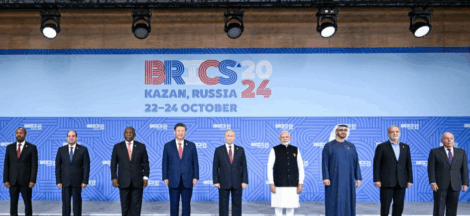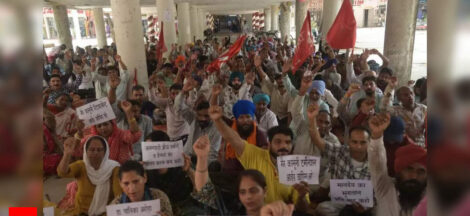By Garga Chatterjee
The hurricane that had started from Singur and Nandigram made landfall in May last year when the 34-year old rule of the CPI(M)-led Left Front came to a sordid end. The storm in village, victory in city- indeed, the surrounding of cities with the villages thing has been the stuff of dreams for quasi-romantic set-piece revolutions that some minds used to conjure up at some point. A macabre version of that vision has come to haunt Paschimbanga (West Bengal), particularly the megalopolis of Goddess Kali, with a certain vengeance.
First, there was the false framing and incarceration of protestors at Nonadanga. Then, there was a more ‘hands-on’ follow-up when a public meeting by the Association for the Protection of Democratic Rights (APDR) to uphold civil liberties and the right to protest, was itself attacked by a group of Congressite goons of the grassroots (trinamul) variety. This specific gang was led by one nick-named Moyna (as in the Myna bird). The god of etymology must have sense of humour – the word ‘moyna’ in turn comes from the Sanskrit word ‘madan’. It is said that this moyna too had the blessings of a grassroots ministerial demi-god called Madan. But I digress. All this happened in front of the police. That phenomenon is not new. The electronic media was there to record it and certain sections of the media even reported it. That is not new either. What is new that this happened in Kolkata, less than a mile away from the temple of the presiding goddess – as some of us like to say, ‘in broad daylight’. Following that a Jadavpur University faculty member was roughed up, students of the city’s elite colleges and universities were labeled as ‘gravest internal security threats’ in the making.
A section of the media and a section of the middle-classes of the city have labeled these incidents portending political authoritarianism in the public realm. While acts such as those just enumerated do reek of rotting carcass, neither the stench nor the carcass is new. It is an old murder. In fact this corpse of democratic politics and free political contestation of public issues has died many times over inWest Bengal. It has been killed in Nanoor, Chhoto-Angaria, Suchpur, Marichjjhapi – rural pockets dotting Bengal’s heartland and deltas like unmarked graves. Of the Herbert Baker designed mausoleum to democratic politics, the biggest of them graves, we are very proud of.
So there is the rub. The long CPI(M) years ensured that all political contestations are transformed into winner-take-all domination games. The CPI(M) did well to keep a semblance of ritual-dissent space in Kolkata. This endeared them to the extra-Bengal faithful and helped sell the cold terror of Bengal’s countryside as ‘minor’ and ‘local’ incidents in ‘far-way’ villages. All public participation spaces of a democratic nature became avenues of contestation and if need be, contestations where blood needed to be spilled to maintain dominance. Elections to school-committees, boards of cooperative societies, college and university student unions, all became occasions where the ‘red-guard’ tried to ensure complete dominance. Student union elections saw CPI(M)’s student wing win uncontested college after college, year after year –the same years when the opposition regularly garnered upwards of forty percent of the votes in the general elections. I shudder to think what would have happened to a faculty member of Kalipur College in Arambagh if he had circulated a similar cartoon of Anil Basu 15 years ago and remained unapologetic.
It is in this backdrop, the rise of Mamata Debi has to be seen. In a contested space, where complete dominance is the only viable ticket to building ‘political’ base, one comes to resemble their ‘enemy’ in more ways than one. Mamata Debi, in many ways, is a product of precisely this model of domination, where the lack of democratic space has come to mean that a counter domination at the ground level is the only viable language of political ascendancy. It is this patois, long spoken in the Bengal outside Kolkata that is now being increasingly heard in the streets of Mahanagari. It has evoked despair, incomprehensibility, even disbelief – all byproducts of the deep alienation that Kolkata’s residents have long had to the lived realities of the rest of Bengal. In Bengal, the political party is an extended community that often trumps and even replaces other allegiances, thus creating a long, nearly unbroken fault-line throughout the country. The effect invariably is a less variegated political landscape. The language spoken between these fault-lines ensure the hollowing out of democratic politics. This political language is alien to what the bhadralok thinks is his actual political idiom.
The present government’s various functionaries, rather tactlessly, have made it clear to college teachers and government servants that being too public about political ideologies and allegiances at variance with the ruling party may not be a very good idea. By enforcing a culture of silence, any voice in the wilderness comes across as a confession of crime. It is the permeation of this culture that marked the closing months of the Buddha years and the debut year of Mamata Debi. This continuity is tragic. It has only been a year. Let us hope that the morning does not predict the day. The panchayat elections in West Bengal need to be closely watched. The number of uncontested seats in the panchayat elections, which are a good barometer of ground-level terror and lack of democracy, will be an important litmus test. We shall see. (IPA Service)


